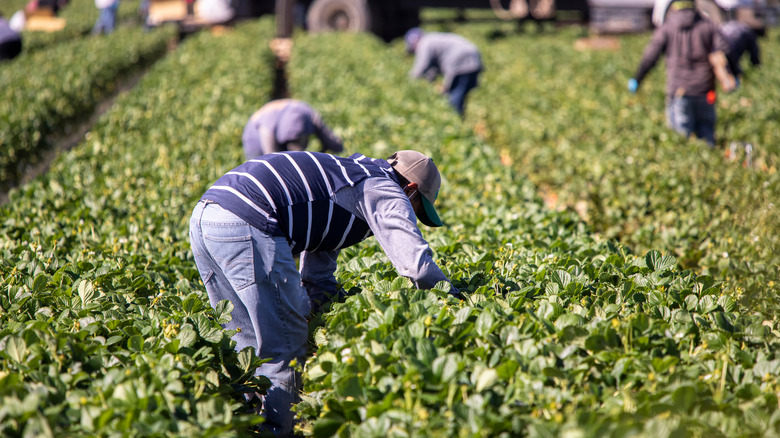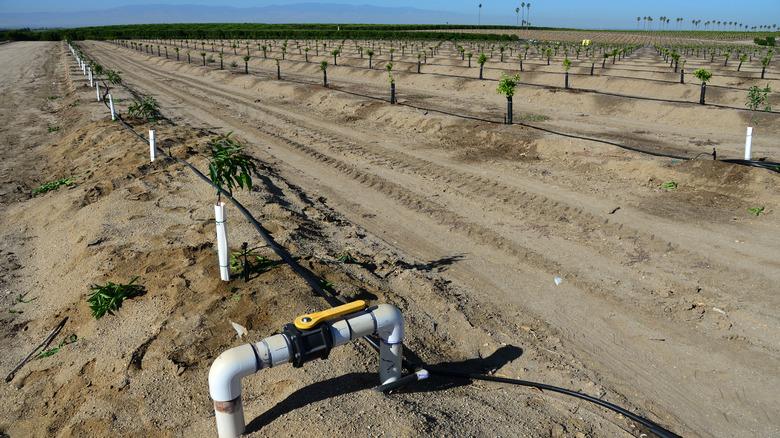How California Was Altered To Become A World-Leader In Agriculture
Farming is big business in California. In fact, Stacker places California at the No. 1 spot of states with the biggest agricultural industry. The most well-known crop may be almonds, as the state produces an absurd amount of the nut annually, but other crops grown in the golden state include 99% of American grapes, 99% of American walnuts, and more than 90% of American tomatoes (per Farm Flavor).
What is more amazing than the amount of crops California produces, however, is the effort that was put into making California able to produce these foods. The United States Geological Survey explains that the San Joaquin Valley manages to produce 25% of America's crops with 1% of its farming area due to a massive irrigation system that pumps out underground water. The valley essentially serves as a trough in which water is poured from the Sierra Nevada.
However, by 1910, nearly all the flowing water had been diverted to allow for farmland. So, feeling the pressure of the number of farms and a severe summer drought, farmers in the early 20th century began to pump out underground water to ensure a year round supply. This involved assembling an intricate system of channels, reservoirs, and pipelines throughout the valley.
California is a victim of its own success
The issue with the method used in the San Joaquin Valley, as described by The United States Geological Survey, is, "The natural replenishment of the aquifer systems has remained about the same, but more water has discharged than recharged the aquifer system; the deficit may have amounted to as much as 800,000 acre-feet per year during the late 1960s." An aquifer is a water-bearing area of stone or earth. So, it can only contain so much water.
In 2019, The Counter reported that the valley would have to reduce its reliance on groundwater by 16%. That is not just refraining from growth and finding new ways to supply the valley's aquifers, but actively letting their crops die. This was five years after California passed the Sustainable Groundwater Management Act, which was designed to regulate groundwater usage with the purpose of ensuring the aquifers don't dry up (per Water Education).
The importance of this is highlighted by the fact that — according to the Public Policy Institute of California – aquifers provide nearly 40% of water to farms and cities in regular years. In times of drought, they provide even more.
But in December, the Los Angeles Times reported that drilling and excavation for new aquifers has continued while local agencies that were charged with the oversight have not taken proactive measures to stop this.

